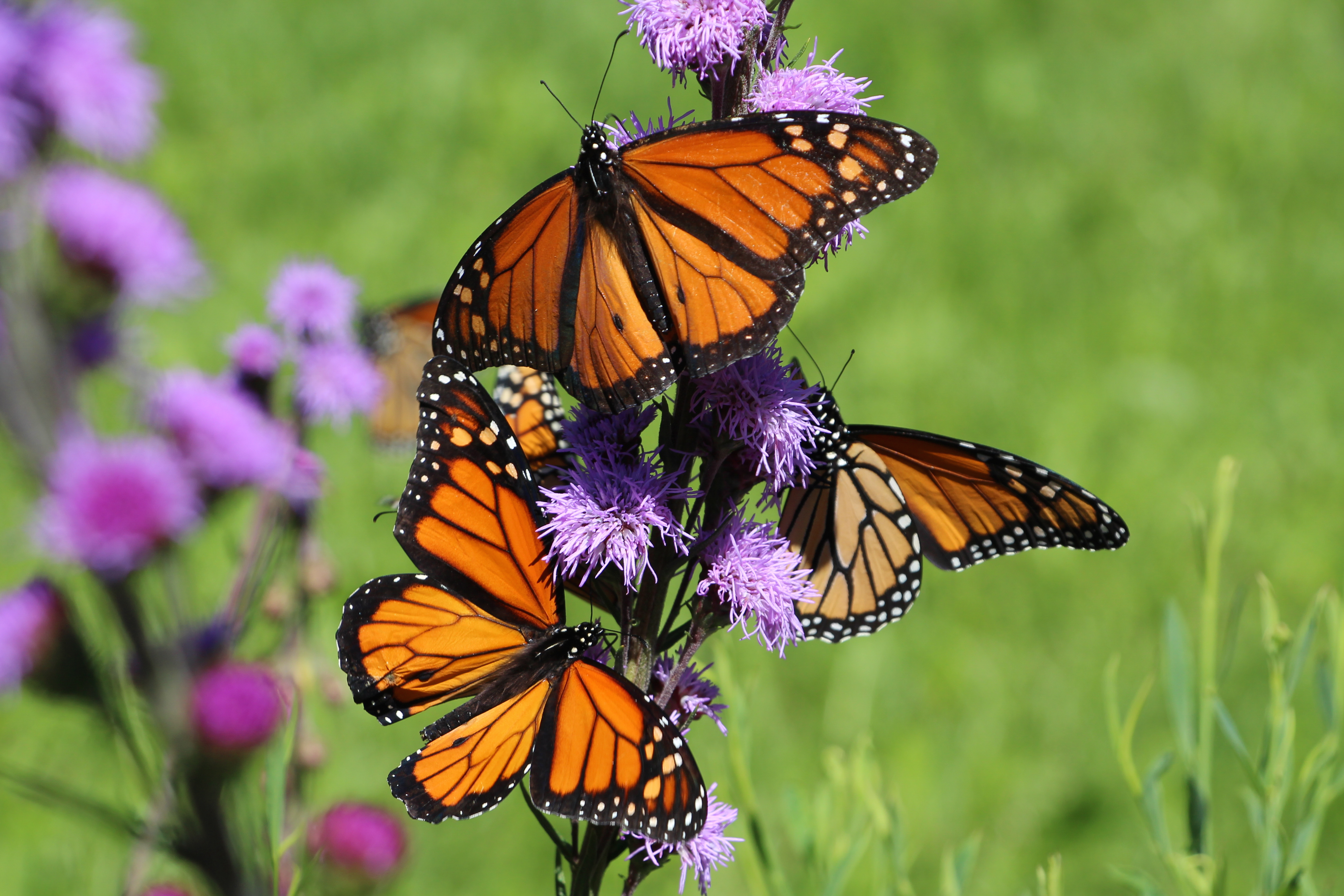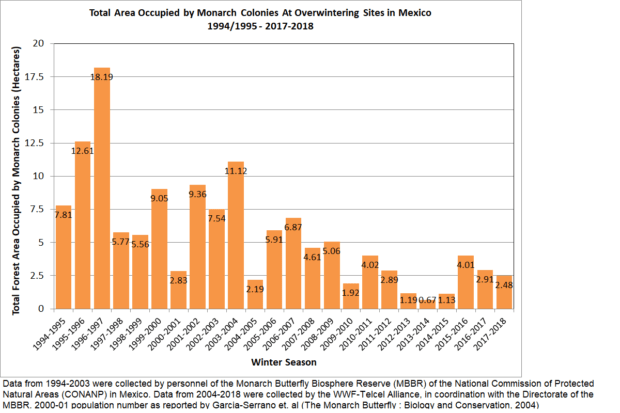We have much more to do and your continued support is needed now more than ever.
Monarch Butterfly 2018 Population Down by 14.8 Percent

The population number of eastern monarch butterflies overwintering in Mexico has been released, showing a 14.8 percent decline over last year, continuing the downward trend that has resulted in an overall 90 percent decline from the population high just two decades ago.
The declines this year are largely attributed to severe hurricanes during monarch migration and unseasonably warm fall weather. Yet monarchs continue to face the loss of their spring and summer breeding habitat in the United States, specifically the loss of their only caterpillar host plant, milkweed, and the nectar plants used by adult butterflies.

Collin O’Mara, president and CEO of the National Wildlife Federation, said today:
“With monarch butterflies now down 90 percent in the last 20 years, we simply must do more if we are going to be successful in reversing monarch butterfly decline. Americans have made great progress in recent years on protecting and expanding habitat for monarch butterflies, as well as native bees and other pollinators, but the monarch continues to struggle in the face of multiple threats, including degradation of their Mexican mountain forest habitat, rapid loss of milkweed habitat in their central flyway, the increased use of pesticides and other toxic chemicals, and impacts from climate change.
“The National Wildlife Federation will continue working with Americans and communities across our nation to plant native milkweed – the only plant that hosts monarch eggs and feeds their young – and other pollinator-friendly plants. We must continue working together to help save the monarch butterfly and reverse the overall trend of declining wildlife populations in the United States.”
The National Wildlife Federation’s efforts to protect and expand habitat for monarch butterflies, pollinators and other wildlife include:
- Approximately 1.5 million acres protected across 217,000 Certified Wildlife Habitats
- 370 U.S. mayors have signed the Mayors Monarch Pledge, agreeing to take specific actions to protect and expand monarch butterfly habitat
- Approximately 700,000 pollinator gardens planted in partnership with the National Pollinator Garden Network
- More than 150,000 Americans have pledged to be Butterfly Heroes
How You Can Help
We can all get involved in saving monarchs. Here are four things you can do today to make a difference.
- Plant Milkweed – Milkweed is the only host plant for monarch caterpillars. It is their sole food source. Without it monarch butterflies cannot complete their life cycle.
- Don’t Use Pesticides – Insecticides kill monarch butterflies and their caterpillars, and herbicides kill the plants they need to survive.
- Create a Wildlife Habitat Garden – Fill your yard or garden with beautiful native plants to offer food, water, cover and places to raise young for monarch butterflies.
- Take the Mayors Monarch Pledge – Work to get your city or town’s leadership to take the Mayors Monarch Pledge and implement practices that protect monarchs and restore habitat at the community or municipal level.






















